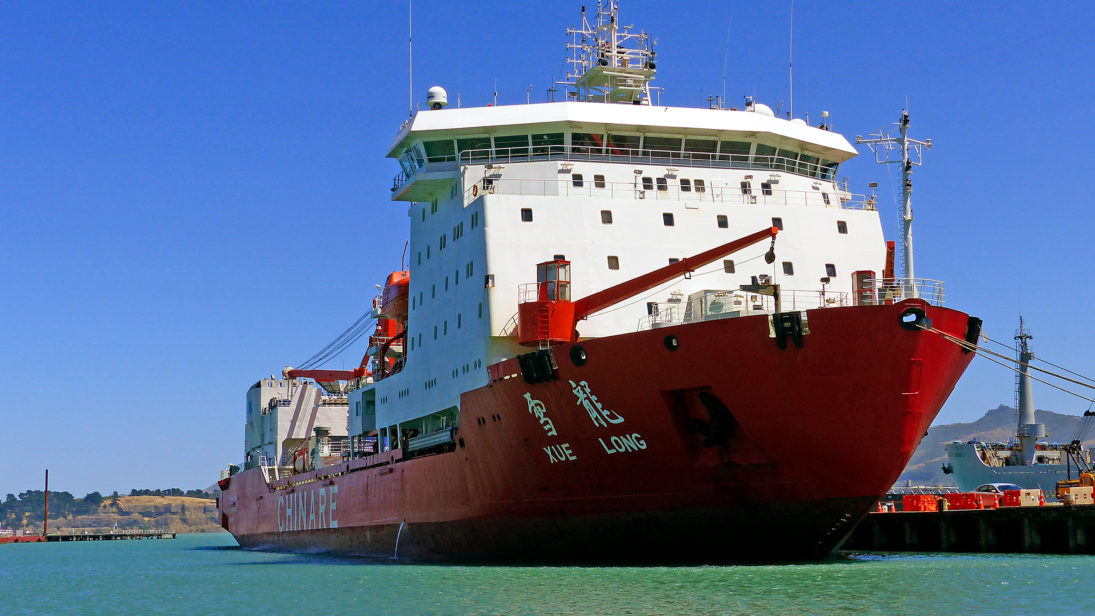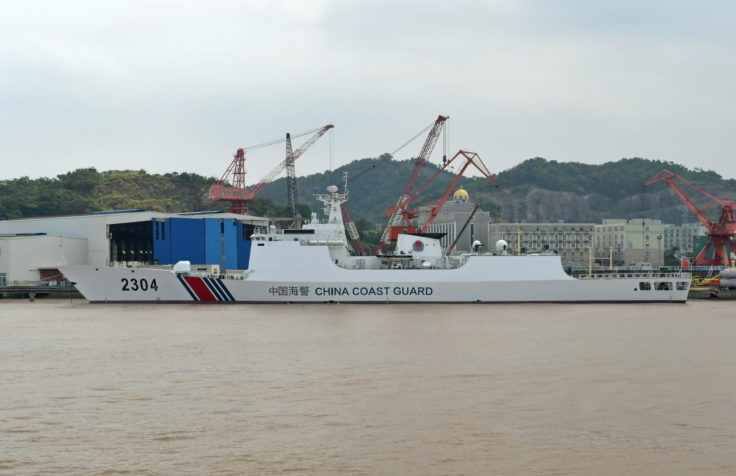
In the last few years, there has been a growing presence of Chinese fishing and research vessels in the waters of the Indian Ocean. Indian officials estimate that since 2015, some 600 Chinese fishing vessels have been seen in the Indian Ocean Region (IOR) each year. While these boats traditionally stay well outside of India’s Exclusive Economic Zone (EEZ), an incident in June 2019 was particularly noteworthy—ten such vessels were reportedly found fishing illegally by the Indian Navy near the coast of Maharashtra, well within India’s EEZ. In December 2019, a Chinese research vessel was spotted near the city of Port Blair in the Andaman and Nicobar Islands and forced out of the country’s territorial waters by the Indian Navy. These examples highlight the questionable maritime activities that Chinese vessels carry out within the maritime jurisdiction of littoral states in the IOR. While there has been much discussion about China’s openly aggressive behavior in the South China Sea (SCS), these potential gray zone actions in the IOR deserve attention and can have long-term strategic implications for IOR littoral states in South and Southeast Asia.
China’s Differing Maritime Approaches: IOR versus SCS
While there has been much discussion about China’s openly aggressive behavior in the South China Sea (SCS), these potential gray zone actions in the IOR deserve attention and can have long-term strategic implications for IOR littoral states in South and Southeast Asia.
China seems to be following a different strategy in the IOR as compared to the SCS when it comes to exerting its presence. In the SCS, where China claims sovereignty over the relevant waters, subsoil, and seabed, it has artificially reclaimed islands, which have been bestowed with military infrastructure and forces. In addition, there is a constant presence of People’s Liberation Army-Navy (PLAN) and Coast Guard vessels next to these landforms despite many of them lying beyond China’s 200 nautical mile EEZ. The international community has established these activities and China’s behavior as belligerent on several separate occasions. And countries like Vietnam, Indonesia, and the Philippines have often been vocally critical of Beijing’s violations of and excessive maritime claims in their respective EEZs.
On the other hand, Chinese presence in the Indian Ocean does not appear as aggressive, prima facie. Beijing’s presence in the far off waters of the IOR has mainly encompassed fishing and research vessels, which it has projected as being well within its maritime rights and adhering to international law.
However, Chinese fishing as well as research vessels near the maritime jurisdictional regions of other states are a concerning factor for two reasons. One, Chinese fishing vessels are not only equipped to fish in the distant waters, ensuring food and economic security for the country, but they can also act as the “eyes and ears” for the PLAN. Chinese fishing vessels are part of China’s maritime militia, which forms a part of Beijing’s maritime enforcement structure, and seen by some scholars as “auxiliary naval forces” of the PLAN. Recent studies have also pointed out that these vessels often do not keep their Automatic Identification System (AIS) on, despite it being mandatory for all fishing vessels under international law to do so. This further shrouds the intent and activities of Chinese vessels in doubt.
Two, it is instructive to look at these activities from the lens of China’s vision of becoming a global maritime power by the year 2050. Using even these non-military vessels could provide China better domain knowledge of the far off waters of the Indian Ocean and give it experience as an expeditionary force, which would allow it to become a blue-water navy that is capable of exercising sea control. Some IOR littoral states suspect that even though China states that the purpose of its research vessels is purely scientific, these vessels could be gathering data to enhance Beiing’s maritime domain awareness by monitoring the ship activity close to or in these states’ EEZs . In recent times, Chinese research vessels have been considered as “spy vessels” by countries such as India, Philippines, and others. Some others have sent protest notes to Beijing as well as bolstered their naval and coastguard presence against Chinese vessels passing in their EEZs.
These developments indicate that even though Chinese activities in the IOR do not appear as concerning at first glance, Beijing is beginning to push the boundaries for acceptable behavior in these waters as well.

International Maritime Law with Chinese Characteristics
China does so because it can. Legally, such behavior falls somewhere within the loopholes of international maritime law such as the United Nations Convention for the Law of the Sea (UNCLOS), which China is party to. Therefore, Beijing’s activities cannot be called entirely erroneous. It is acting in a gray area that has not yet been addressed by the international community, either unilaterally or multilaterally. However, this does not excuse China’s behavior, because it is quite brazenly acting outside established and practiced international norms.
China interprets and illustrates these norms differently from the rest of the world. And therein lies the problem. In light of its aggressive behavior elsewhere over the past few decades, its unexplained activities in the IOR do nothing to mitigate the situation. For instance, in the SCS, instead of providing an explanation for its vessels’ presence, Beijing confronts questions with a belligerent diplomatic and military reaction, which is only making matters worse. If Beijing is looking to assimilate itself within regional and global multilateral systems, it needs to follow agreed-upon norms and respect other countries’ point of view.
If China claims to be sensitive to its IOR partners’ concerns and truly practices win-win cooperation, it needs to bolster its words with actions.
There are early signs the Beijing may be coming to this recognition—after the incident with its research vessel in the Andaman Sea, China agreed to adhere to UNCLOS and has required its research vessels from now on to seek prior consent from the state in whose waters they would be working. However, it is too early to tell whether this is the beginning of a complete shift in Chinese maritime behavior in the IOR.
Matching Chinese Rhetoric with Action in the IOR
Recently, Beijing has sought to build partnerships with regional countries in the IOR and beyond. Bilateral and multilateral joint military exercises, sales of arms and defense-related platforms to regional countries, participation in humanitarian assistance/disaster relief related activities, and so on are all part of its outreach. However, the presence of its research and advanced fishing vessels in or near the EEZ of other coastal states continue to raise eyebrows and keep countries’ navies and coastguards on the edge. If China claims to be sensitive to its IOR partners’ concerns and truly practices win-win cooperation, it needs to bolster its words with actions. Being transparent about its non-military maritime vessels present near the waters of other states by conforming to UNCLOS would be a welcome step in this regard. Further clarity on the nature and objectives of China’s scientific experiments could also help reduce regional apprehensions, and may provide opportunities for future collaborations between China and IOR nations.
***
Image 1: Bernard Sragg via Flickr
Image 2: Tyg728 via Wikimedia


